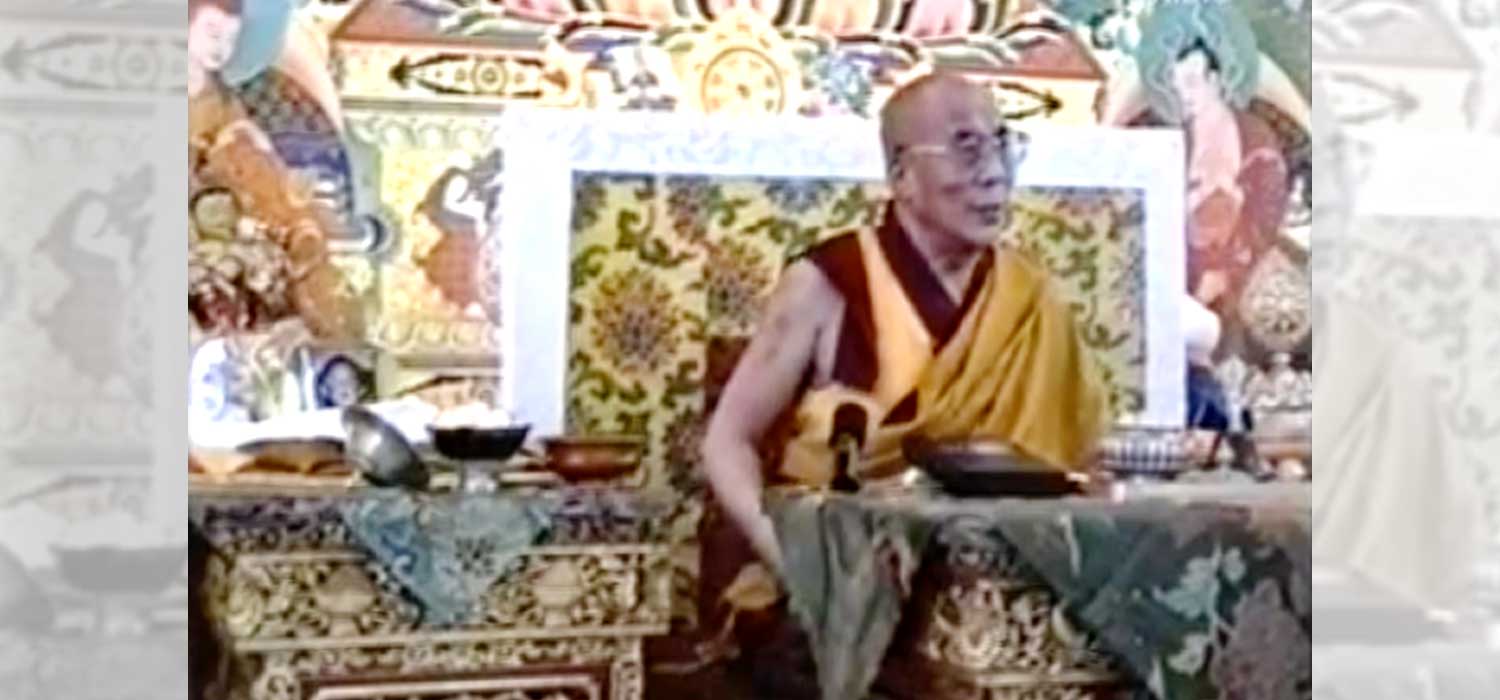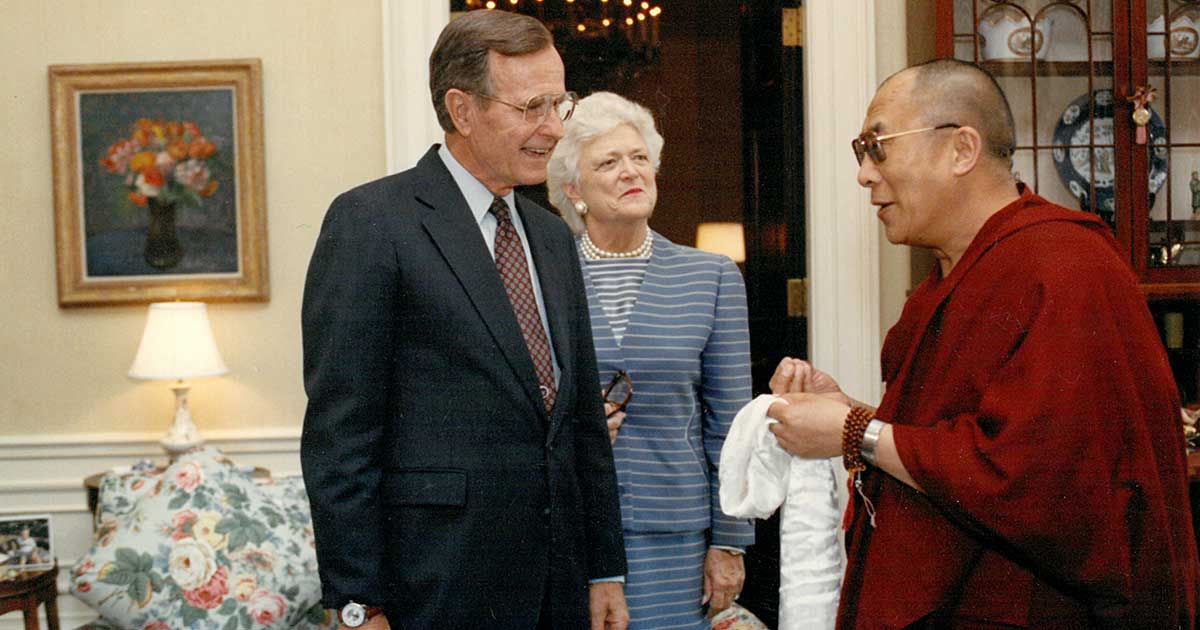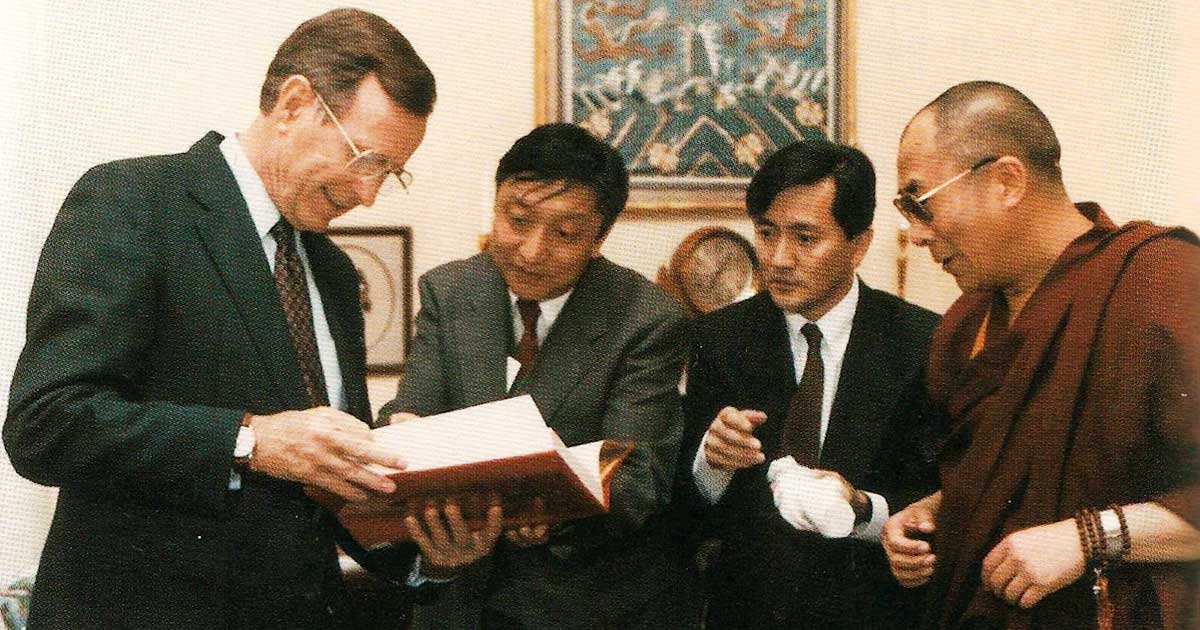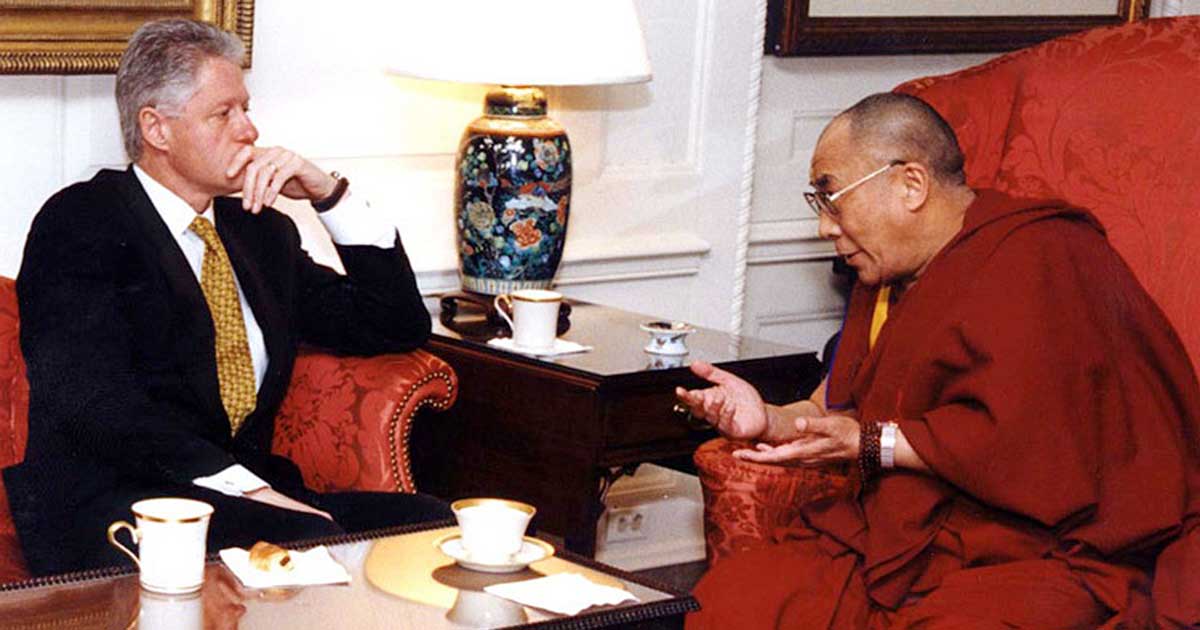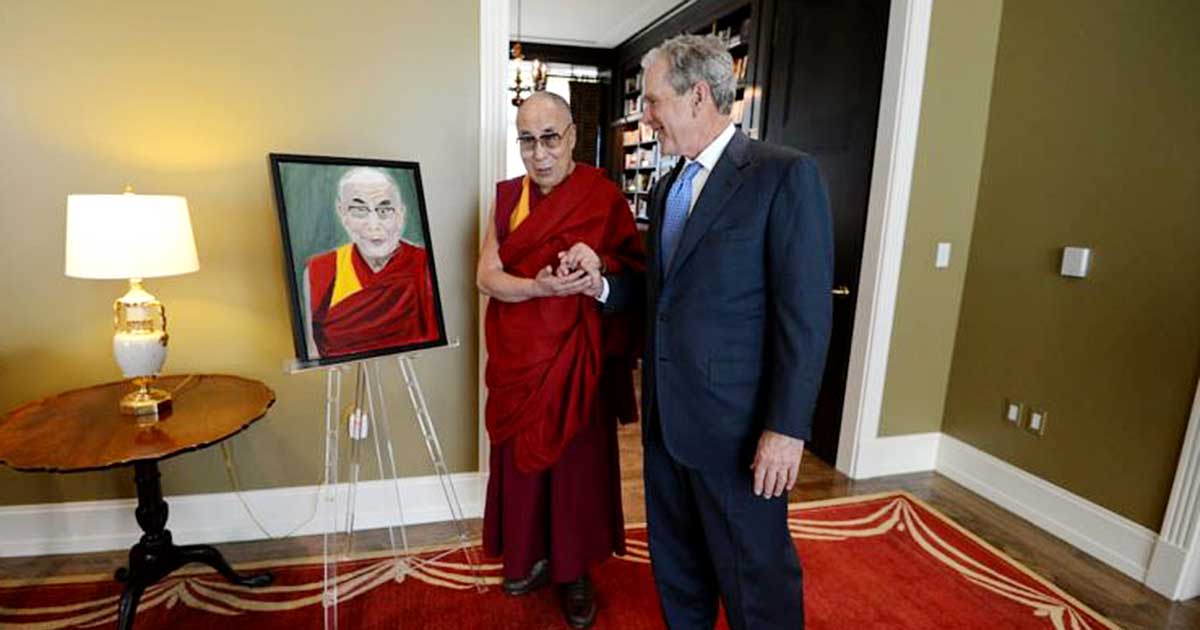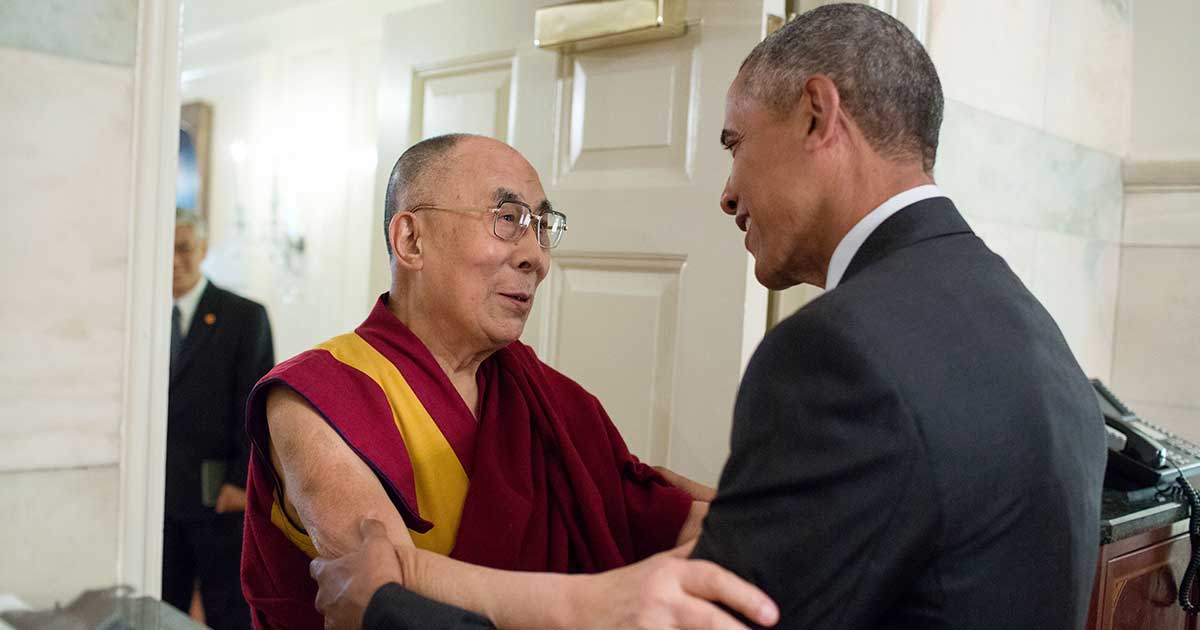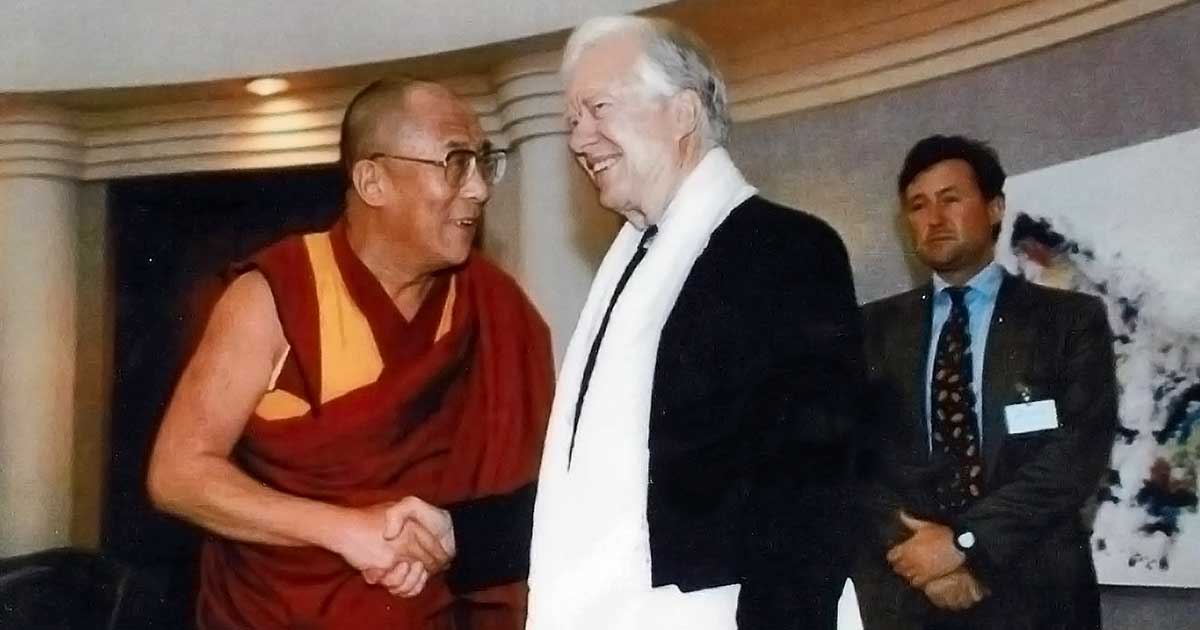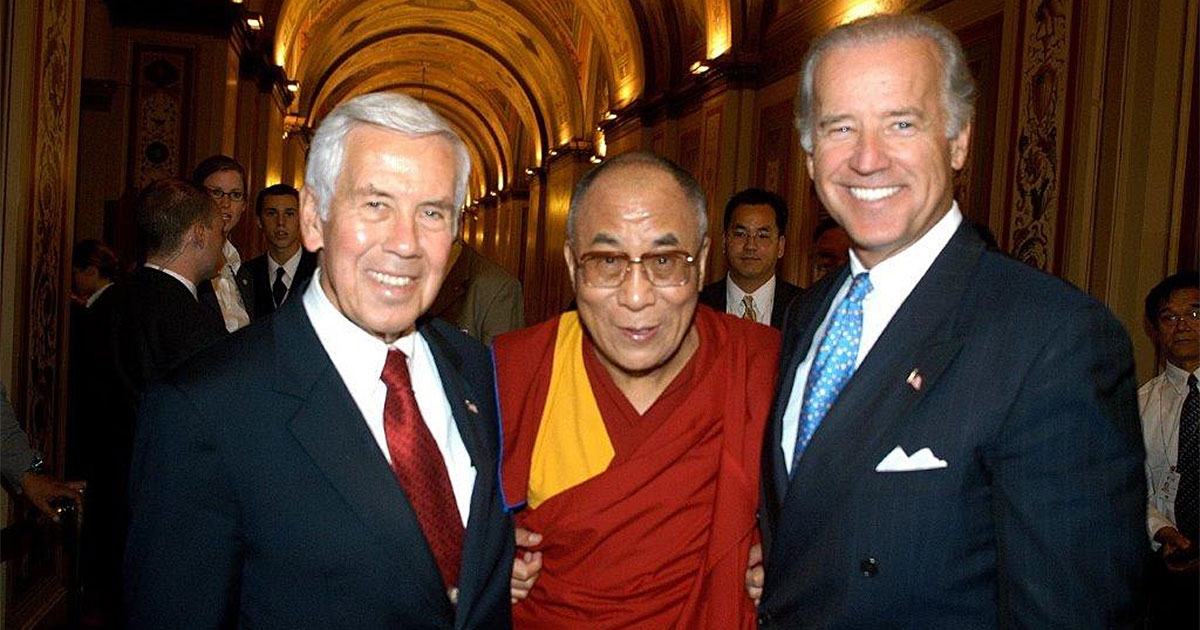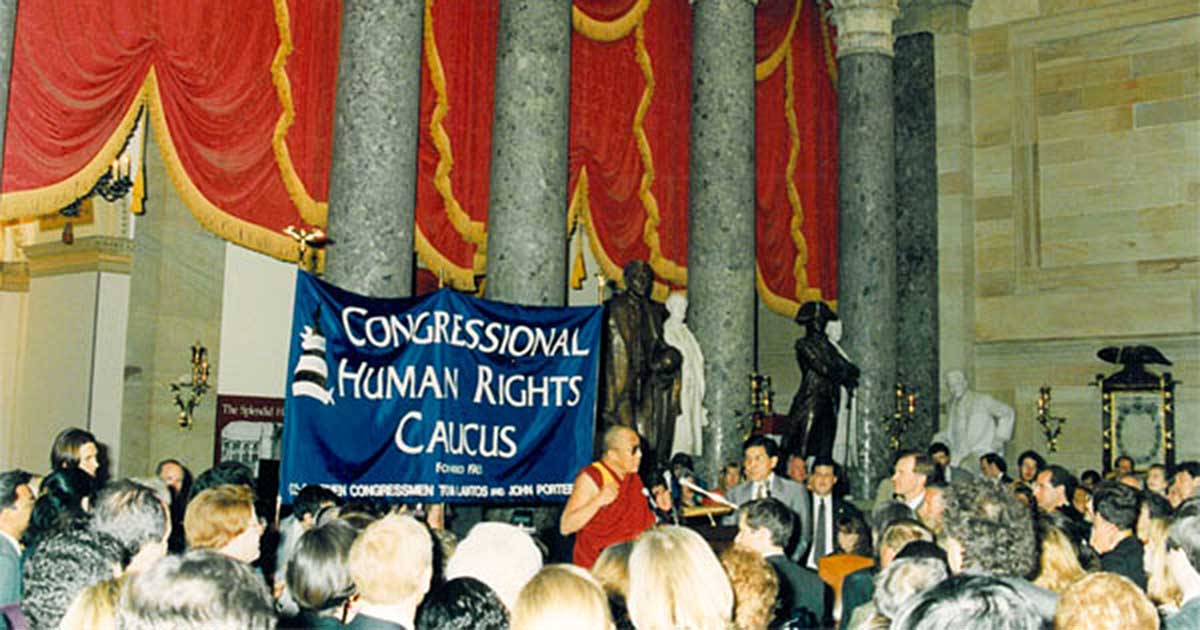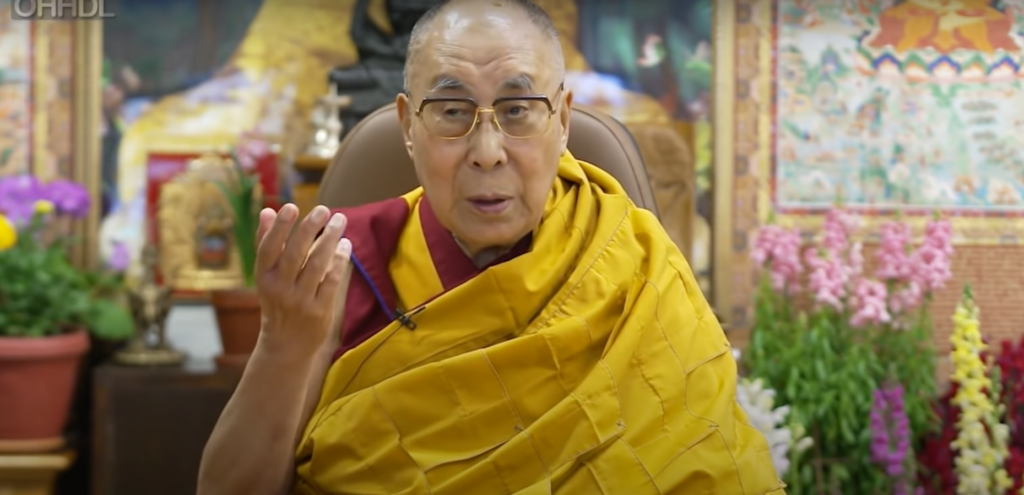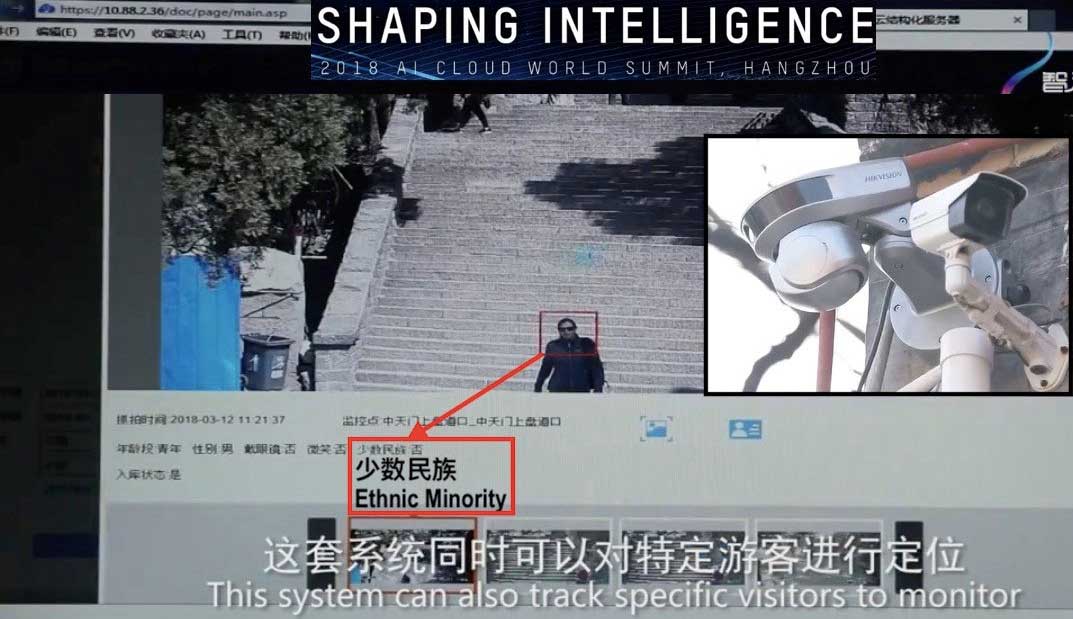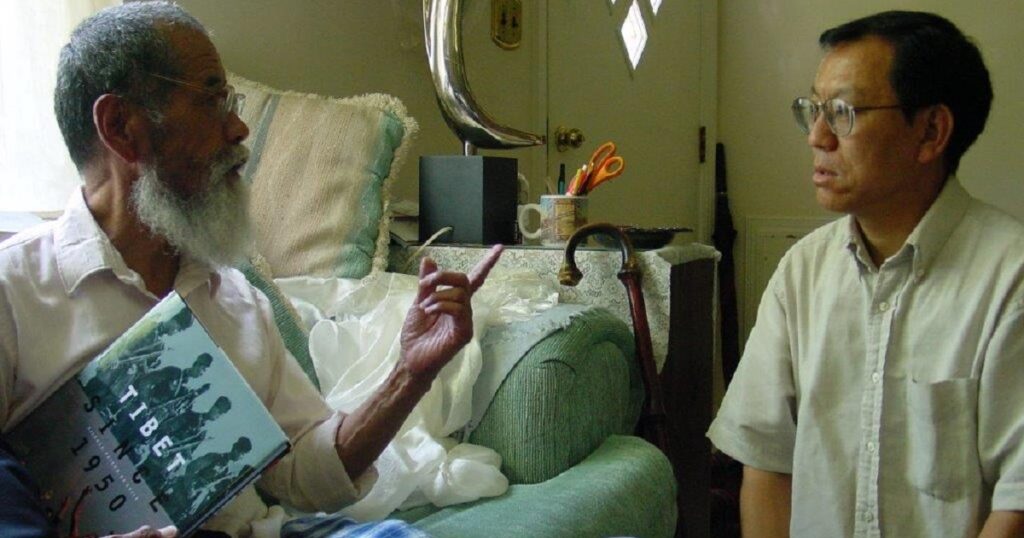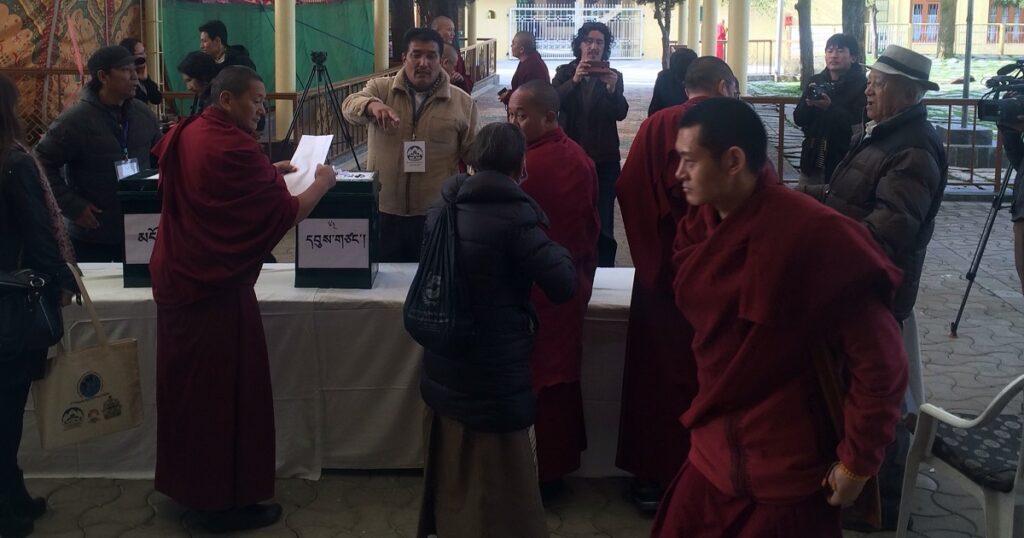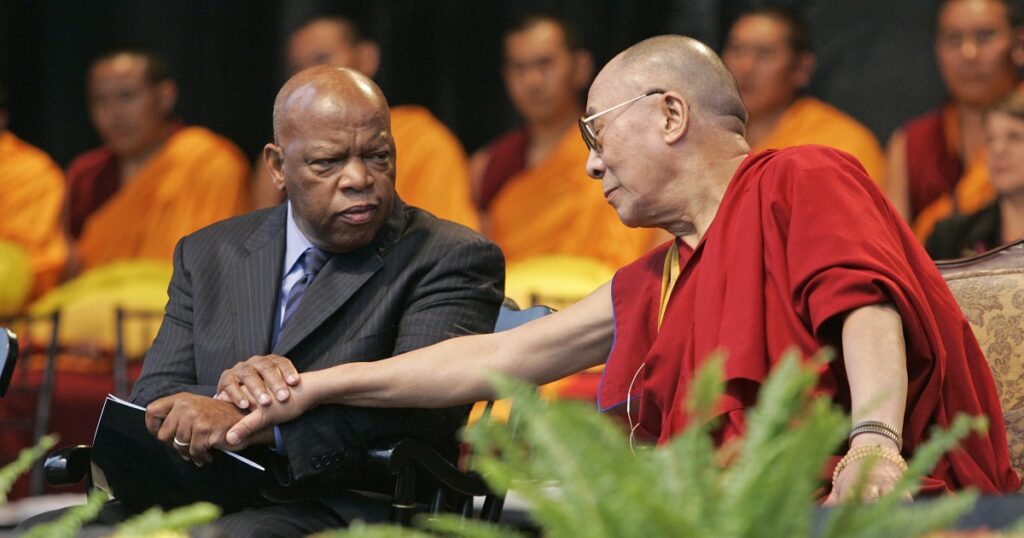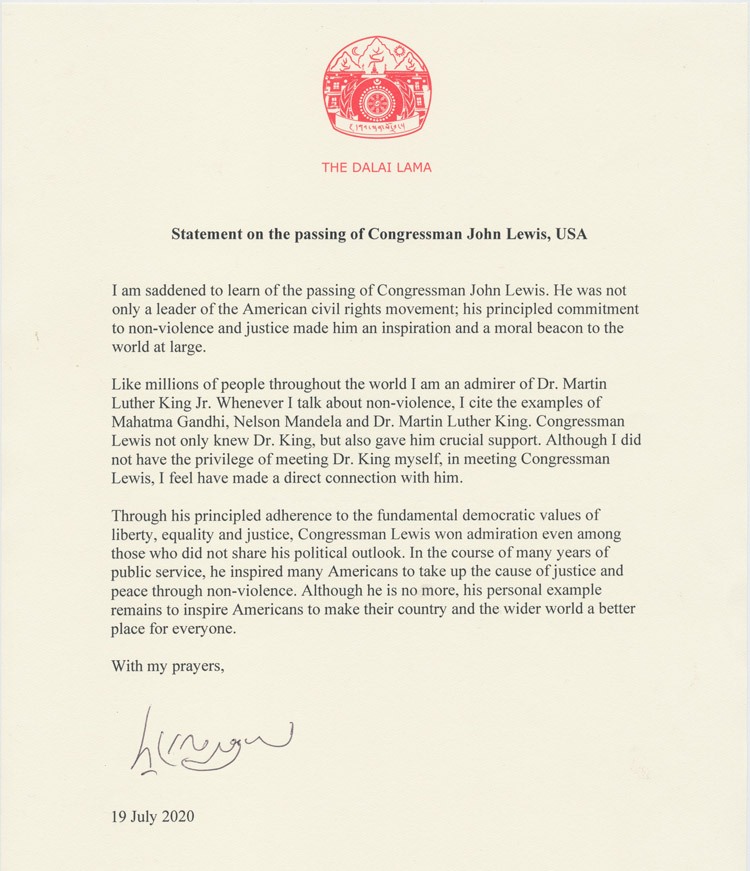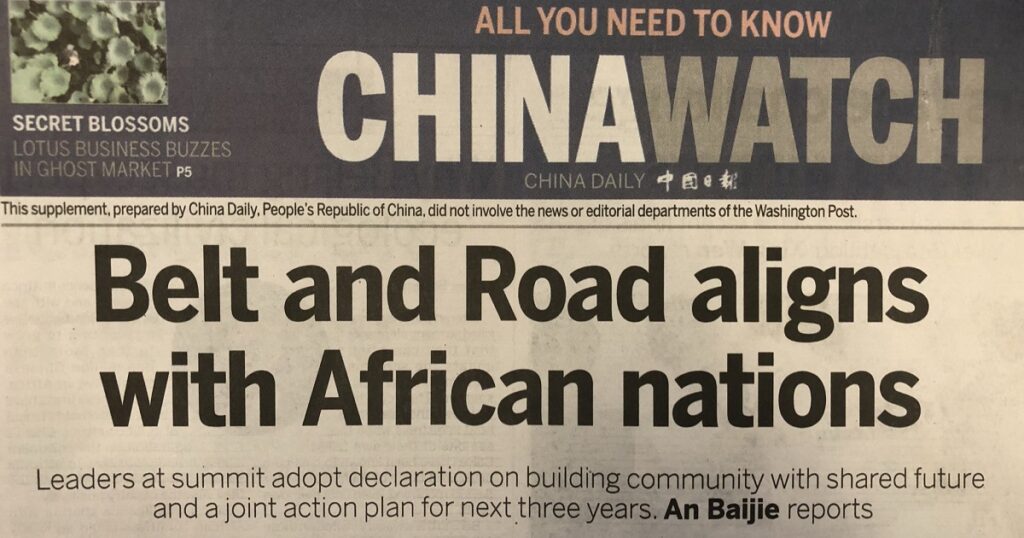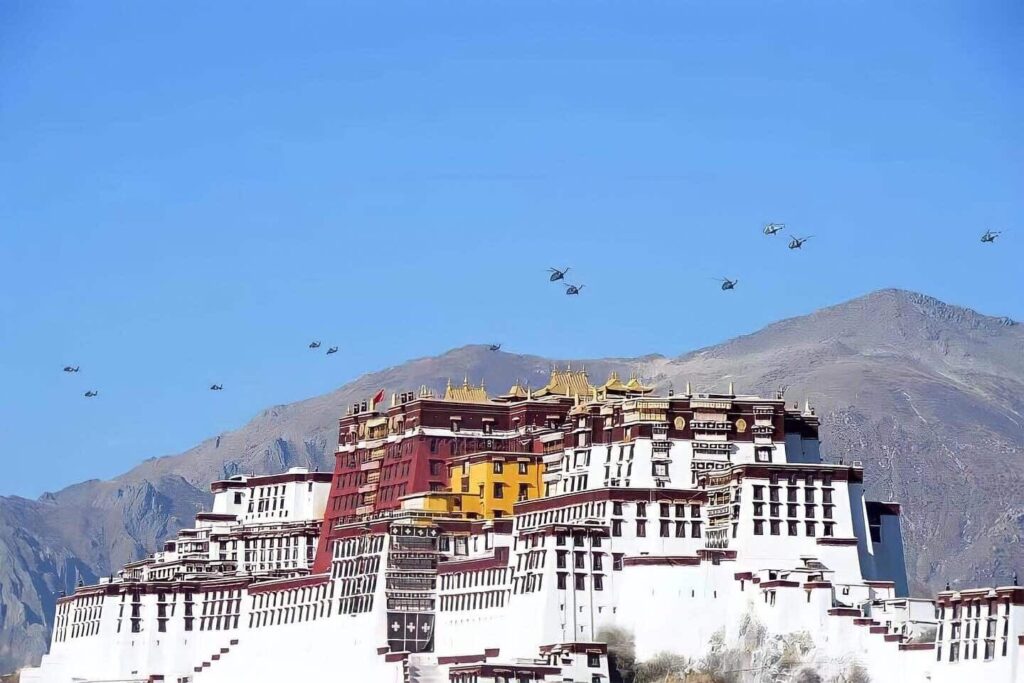
Chinese military helicopters fly over the Potala Palace in Lhasa, Tibet.
hen you’re trying to help the victims of oppression, it can sometimes feel hard to believe that anything you’re doing actually improves their lives. But recently, the passage of new legislation—and the sight of Chinese military helicopters—reminded me that our community of compassion at the International Campaign for Tibet is making a difference.
A few months ago, I joined all of you in celebrating when the Tibetan Policy and Support Act, the watershed bill we spent years advocating for, became law. The TPSA promised to upgrade US support for Tibetans, defend the succession of the Dalai Lama from China’s interference, address water security and climate change in Tibet, and much, much more.
The enactment of the TPSA was the triumph the Tibet movement had been waiting for, and it was one we saw play out in votes on the floor of the US Congress and statements from the White House. So it was jarring, then, a few days later when I began to see photos of China’s helicopters flying over Lhasa, Tibet’s capital, in an apparent response to the TPSA.
China’s response to the TPSA
According to Indian news outlet the Hindustan Times, the aerial drill could have signaled that China planned to accelerate its “Sinicization” of Tibet—an effort to eliminate Tibet’s unique culture and force Tibetans to assimilate into Chinese society—in light of the TPSA’s passage.
“China wouldn’t want anything to happen in Tibet that reflects support for the US law …” an analyst told the newspaper. “The military drill was a preemptive move and would be followed by other steps to stem any potential dissent.”
I remembered those articles this week when Lobsang Sangay, president of the Central Tibetan Administration, described the Chinese government’s reaction to the TPSA during a virtual celebration of the law hosted by the Regional Tibetan Association of Massachusetts, Amherst.
“They brought helicopters over Potala Palace,” Sangay said, referring to the historic winter residence of the Dalai Lama. “They brought military in the streets of Lhasa and various other places. They had a war drill or anti-riot drill for days, some say for weeks, to intimidate Tibetans, to create fear that there might be another uprising in Tibet in appreciation of the support of the bill.”
Sangay added that the Chinese government has been holding workshops on the TPSA for its officials in Tibet and ordering scholars to write articles against the legislation. That helps explain why I’ve seen so many anti-TPSA stories in Chinese state media since the bill passed.
Here and there
Like the vast majority of my International Campaign for Tibet colleagues—including the Tibetan ones—I’ve never set foot in Tibet. The only images I’ve seen of it have come from photos and video snippets. All the advocating I’ve done for the Tibetan people has taken place far away, more than 7,500 miles from Lhasa, in the comfort and safety of Washington, DC (which, granted, feels a little less safe this year for reasons you can probably imagine).
Because the Chinese government makes it almost impossible for foreigners to enter Tibet and keeps information about Tibet from reaching the outside world, I’ve never gotten much of a glimpse into the effect our work at ICT has on Tibetans living under China’s authoritarian rule. I, of course, have always hoped that we’re helping to raise their spirits after decades of China’s oppression and laying seeds for greater freedom and justice in Tibet in the future.
I did understand that China might respond to the legislation we’ve helped pass by cracking down on Tibetans. But speculating about that felt a lot different than actually seeing images of the Chinese military bearing down on Tibet.
I hope this goes without saying, but the thought of any Tibetan suffering because of something I contributed to horrifies me. Obviously, it’s the opposite of what I want.
Reaction by Tibetans
I trust you’ll also believe me when I say I don’t feel I have the right to decide how much suffering in Tibet is okay in the short run so that Tibetans can get human rights over the long term. I think it’s important for Tibetans themselves to take the lead in making those decisions. (I know that’s a standard disclaimer these days in social justice discourse, but I still want to make it clear.)
One group non-Tibetans should look to for guidance is the Central Tibetan Administration, which provides democratic representation for Tibetans in exile. Although Sangay, the administration’s president, unnerved me with his vivid description of China’s response to the TPSA, he gave me a smile by talking about the response from Tibetans.
“Inside Tibet, they were celebrating it,” he said. “In monasteries, they were praying, they were burning incense to appreciate the US government for what you have done.”
Sangay added: “Yes, there’s a clampdown. There’s repression. And obviously, they cannot say much. But deep down, I know in the dark cells of prisons also, they are very, very appreciative for passing this bill.”
There were other inspiring moments at the TPSA celebration this week, which featured remarks by Congressional leaders, Tibetan association presidents, the North American representative of the Dalai Lama and ICT Interim President Bhuchung K. Tsering, among others.
More than ever
One of the featured guests of the event was Rep. James McGovern, D-Mass., who introduced the TPSA in the House of Representatives alongside Rep. Chris Smith, R-N.J. Sens. Marco Rubio, R-Fla., and Ben Cardin, D-Md., introduced the bipartisan bill in the Senate.
McGovern pointed out the TPSA is part of a wave of recent Tibet legislation that has also included the Reciprocal Access to Tibet Act, which became law in 2018 and led to the State Department announcing last summer that it had banned Chinese officials from entering the United States over their role in keeping Americans out of Tibet.
“In the last couple years, we have passed more legislation on human rights in China and on issues related to Tibet than at any other time in Congress,” McGovern said.
He added that he hopes the Dalai Lama will be able to return to the United States to meet with President Biden and Vice President Harris. The Tibetan spiritual leader has previously met with Presidents George H. W. Bush, Clinton, George W. Bush and Obama.
McGovern said he believes the Biden administration will soon appoint a new high-ranking special coordinator for Tibetan issues in the State Department. ICT has stressed the importance of appointing someone for the role at the undersecretary of state level or above so that person has the resources and authority needed to be successful.
New administration
Meeting with the Dalai Lama and appointing a new special coordinator for Tibetan issues are two promises Biden made during his campaign.
Since taking office, his administration has taken a number of steps to show support for the Tibetan people.
- At the beginning of this month, the State Department gave a statement to Radio Free Asia pledging that the US will pressure China to re-enter dialogue with the representatives of the Dalai Lama; end its interference in the selection of Tibetan Buddhist leaders; and respect Tibetans’ unique culture, religion, language and environment.
- A few days later, on Feb. 5, during his first phone call with China’s top diplomat, the new secretary of state, Antony Blinken, said the United States will continue to push for human rights and democratic values in Tibet.
- And just last week, Blinken delivered a video message at the State Department’s annual reception for Losar, the Tibetan New Year. The department has held the reception every year since 2015; Blinken was the first secretary of state to speak at it. Blinken later tweeted his Losar greetings and called for the preservation of Tibet’s “rich traditions.”
These actions have added to the momentum from the bipartisan passage of the TPSA and the Reciprocal Access to Tibet Act during the last administration.
Global support
The new laws have also echoed across Europe and the democratic world.
In July 2020, Josep Borrell, the European Union’s foreign policy chief, said the EU opposes any interference in the Dalai Lama’s succession by the Chinese government. (The TPSA requires the State Department to work at the international level to build support for Tibetan Buddhists’ freedom to choose their own leaders. Borrell’s statement was a nice head start.)
Earlier, Borrell, who is also vice president of the European Commission, responded to a question from Member of the European Parliament Isabel Santos by saying, “The Commission will continue to call on the Chinese authorities to allow reciprocal access to Tibet” as part of the EU’s human rights dialogue with China.
In addition, officials in Belgium, Germany and the Netherlands have also recently stated their position that Tibetans have the right to choose their own religious leaders without China’s influence. ICT’s European offices have helped spearhead efforts to build support for Tibetans in Europe.
Last month, the European Foundation for South Asian Studies, a think tank, suggested the TPSA could lead to more democratic countries expressing support for Tibet.
“It would be worth watching whether a few such democracies take the cue from the US and acknowledge the sufferings of the Tibetans more substantially,” the foundation said in a report.
The report added that the TPSA could “provide a template and options for India”—the world’s largest democracy and the exile capital of the Tibetan people—“to examine and expand upon in its future dealings” with China.
Pushing forward
During the celebration of the TPSA this week, Bhuchung K. Tsering, ICT’s interim president, said “Congress has done its part in passing the legislation. We now look forward to working with Congressman McGovern, Senator Rubio and their colleagues in the Congress to see that the Biden administration fully implements the TPSA” and the Reciprocal Access to Tibet Act.
Bethany Poulos, policy analyst in Rubio’s office, added that the TPSA “wasn’t a one off.”
“We’re going to continue to work on this issue,” she said. “It’s going to be a priority in Congress.”
That should encourage all of us who care about Tibet to keep pushing forward with our advocacy. We know that whatever we do, China won’t stop its repression in Tibet tomorrow, as its recent show of military force in Lhasa made clear. But at the same time, our actions are having a clear impact.
“Don’t ever, ever think that your voices don’t matter,” McGovern said. “That is what made the difference here. People in the Tibetan community, throughout the world but in the United States, raised their voices, advocated and made a difference.”
As an ICT member, you’ve made a difference for Tibet and contributed to the unprecedented momentum of the Tibet movement. The last few months have provided a startling reminder of the real-world results of our activism. As we look ahead to the rest of 2021 and the future, let’s try to give our dear friends in Tibet more reasons for hope and celebration.
